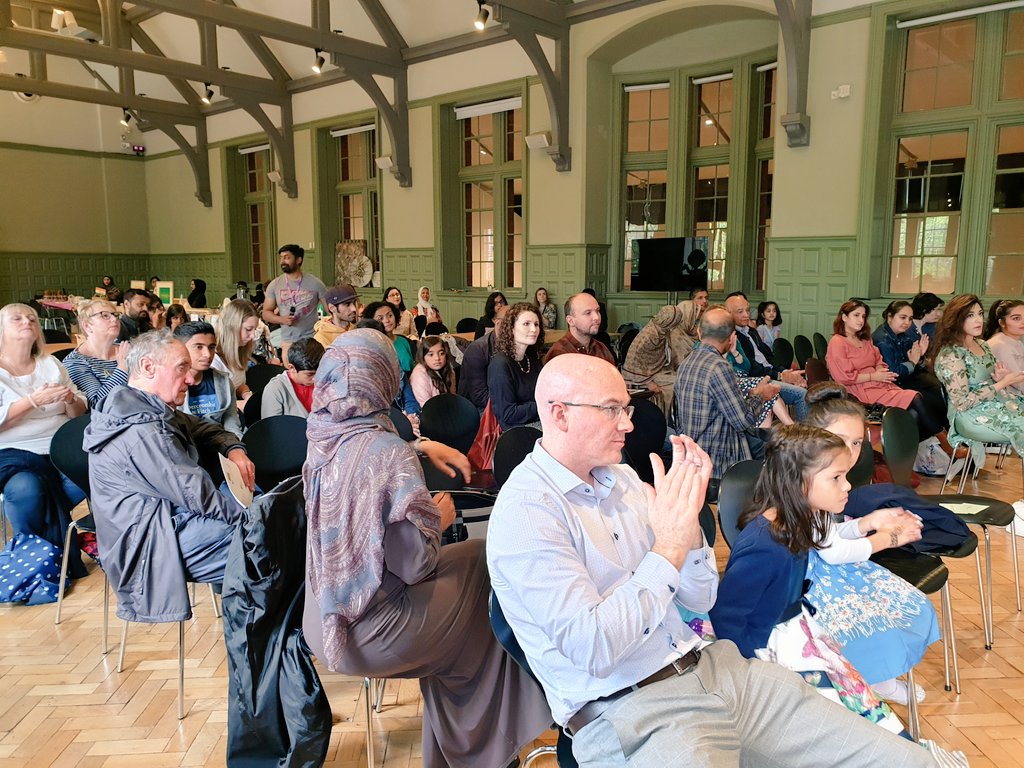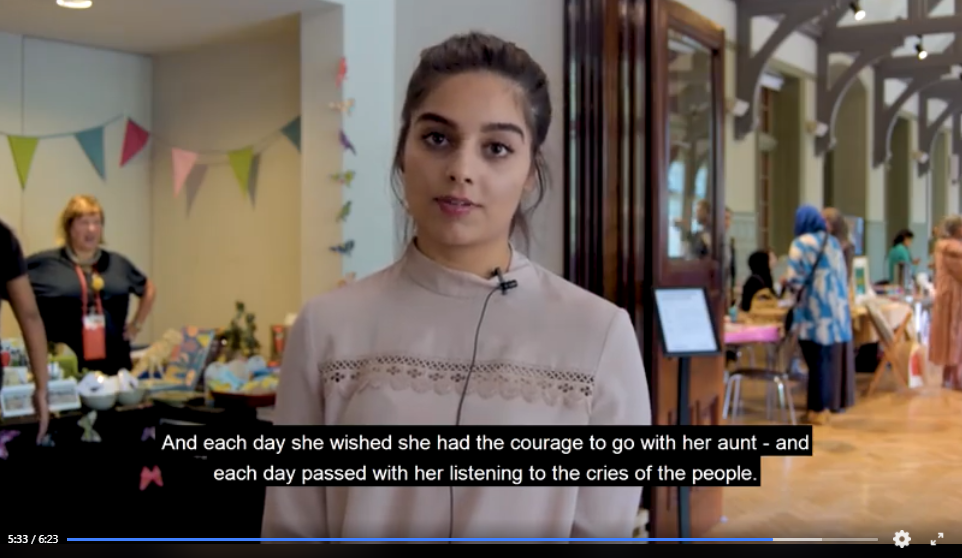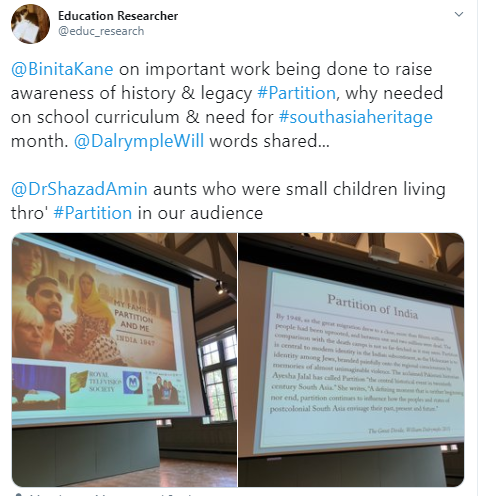A year and a month ago we had our very first #OSCH #kickthedust event where young people were leading on a commemoration event for Partition1947.

Commemorating the history of the Partition of India was a collaborative event organised by Manchester Museum and Whitworth Art Gallery on Saturday 17 August 2019. Taking place in the Grand Hall at Whitworth Art Gallery, the event was very well attended by families from as far as Yorkshire. One family had brought their aunts who had lived through Partition and were visiting the UK for the summer.
The principal themes discussed throughout the day were:
1 Why do we need South Asian Heritage Month?
2 Why/how does the history of the Partition of India need to be taught in UK schools?

Highlights of the Partition1947 commemoration
- We ran a call out for young creatives to plan and deliver workshops for young people and wider communities.
- It was a family event: there were guided tours by curators, presentations by local historians and renowned authors, Dr Binita Kane highlighting the work that has been done to campaign for South Asian Heritage Month and for the Curriculum to teach about Partition, workshops led by young people, object handling of South Asia related collections from Manchester Museum, films and performances; there was also a bazaar for young creatives to sell arts and crafts, refreshments and books; and a ‘partition wall’ for attendees to note thoughts and comments on the themes of the day.
- Young people led on the workshops – they designed and delivered engaging workshops for children and for the community. There was good attendance of young people with their families.
- A young local news reporter – Aran Dhillon of Home Away from Homeland – was invited to cover the day’s events, and also recorded a young person’s recitation of Sujata Bhatt’s poem Partition and uploaded it to social media. His excellent video of the event is available on social media.

Ala – one of the young people – beautifully recited Partition by Sujata Bhatt. This was recorded and shared on social media by a local reporter who we had invited to the day.
Partition by Sujata Bhatt.
She was nineteen-years-old then
and when she stood in her garden
she could hear the cries of the people
stranded in the Ahmedabad railway station.
She felt it was endless – their noise –
a new sound added to the city.
Her aunt, her father’s sister,
would go to the station every day
with food and water –
But she felt afraid,
felt she could not go with her aunt –
So she stood in the garden
listening. Even the birds sounded different –
and the shadows cast by the neem trees
brought no consolation.
And each day she wished
she had the courage to go with her aunt –
And each day passed with her
listening to the cries of the people.
Now, when my mother
tells me this at midnight
in her kitchen – she is
seventy-years old and India
is ‘fifty’. ‘But, of course,
India is older than that,’ she says,
‘India was always there.
But how I wish I had
gone with my aunt
to the railway station –
I still feel
guilty about that.’
And then she asks me:
‘How could they
have let a man
who knew nothing
about geography
divide a country?

Young person Ala’s stunning recitation of Sujata Bhatt’s poem was recorded by a local news reporter, Aran Dhillon, and is available here to view on social media.

Ala’s reflection on the poem: “When I first read the poem, I began to understand the difficulties that a particular family went through during the Partition. Then as I practiced it, I developed an emotional attachment with the main character, to join her aunt to help the people in need. When I was reciting it, I wanted the audience to feel what I felt, which was grief and sadness. So I tried to recite it in a way to evoke the audiences’ feelings”.
At the Partition1947 event, a young person – Deshna – applied through an open call out for the paid opportunity to lead a creative workshop that was attended by around 8 to 10 children. Feedback from Deshna: “…this event aimed to increase cultural understanding of various ethnicities, religions, heritage and traditions. And for this reason I designed a workshop to allow those of any background to learn and respect those of other backgrounds through finding out about what they had in common.
First the children added to a Spider diagram describing the similarities within their routines, rituals, traditions, journeys etc. Once they had filled the paper with all they could think of, they were given the opportunity to create collages from magazines, newspapers, calendars and wedding cards that described their joint experiences.
In my opinion facilitating the children to be able to create something they are proud of and each with their individual style and meaning gave me a huge amount of joy and I hope I can do it all over again!”
What did we learn about young people, communities and heritage?
- We need a longer time needed to plan for an annual event on Partition1947 which would mean scope to have a grander event with more young people organising the day.
- The local South Asian communities really want more events in the heritage sector that are family-oriented, for young people, and that explore South Asian histories.
- We should hold a weekday event for school students and teachers to lead on Partition1947 workshops/talks and participate in the commemoration.
- The event was advertised through social media/community groups – but we need more lead time to publicise the event for more young participants and attendees.
- Young people embrace the chance for paid opportunities to organise workshops for other young people, children and communities – and we should have more of this input from local young people.


